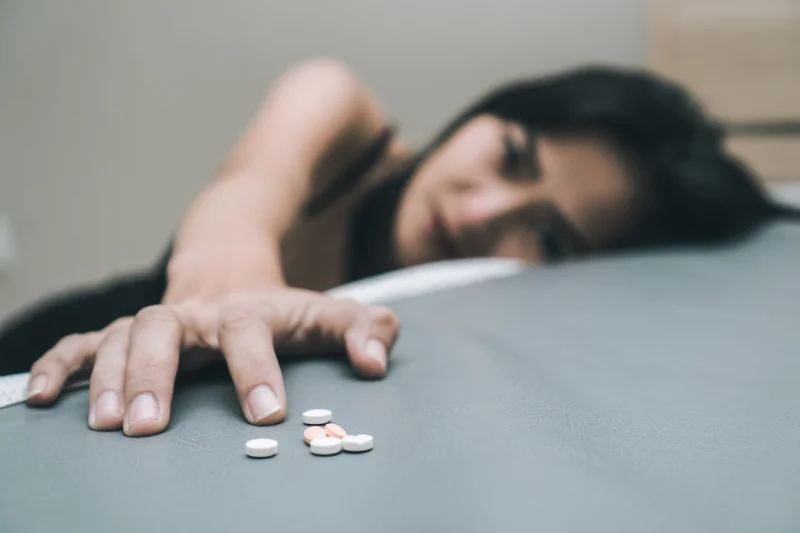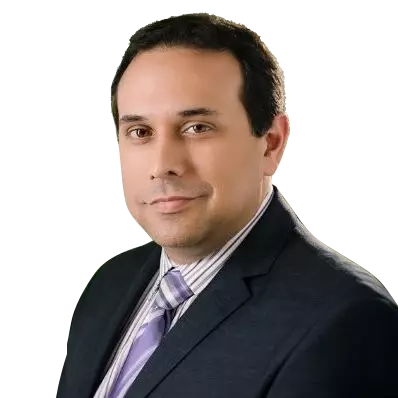Understanding Co-Occurring Disorders: Mental Health and Substance Misuse
Every year, millions of people around the world die from addiction-related diseases, and this is only a small fraction of the total suffering caused by substance use disorders.
Unfortunately, substance misuse and addiction become considerably worse when co-occurring mental health disorders are present.
Read on to learn what co-occurring disorders are, how they work, and your treatment options.
What Are Co-Occurring Disorders?
Co-occurring disorders are mental health or substance use disorders present in the same individual at the same time. When someone has co-occurring disorders, they are often said to have a dual diagnosis. One individual can have any number of co-occurring mental health and substance use disorders at a time, and it is common for one person to have several.
Co-occurring disorders are problematic for a number of reasons, and they make treatment more challenging.
“The hardest part of treating co-occurring disorders is managing the complex relationship between substance abuse and mental health. Simultaneous treatment is crucial, requiring coordinated efforts from mental health and substance abuse professionals. The risk of relapse and the need for ongoing support also present significant challenges.” says psychiatric mental health nurse practitioner (PMHNP) Valerie Puffenberger.
It can also be difficult to distinguish underlying issues because the relationship between mental health and substance use disorders is so close, and the symptoms are often similar or the same.
Common Co-Occurring Disorders

There is a close link between mental health conditions and substance misuse. Having virtually any mental health condition will increase the likelihood of an individual having a substance use disorder at some point in their life. However, some mental health conditions are known for being especially commonly associated with addiction.
In terms of sheer numbers, the most common co-occurring mental health disorders are the various forms of depression and anxiety. This is because depression and anxiety are by far the most common mental health issues in the world.
Estimates suggest that:
- Between 10% and 30% of those who experience major depressive disorder also experience a co-morbid substance use disorder.
- Approximately 20% of those with generalized anxiety disorder also experience a co-morbid substance use disorder.
Because approximately 10 to 30% of Americans suffer from depression and/or anxiety at some point in their lives, this adds up to a large population.
In terms of how closely a mental health condition is associated with substance use, other conditions stand out. In particular, bipolar disorder, schizophrenia, and borderline personality disorder are very closely associated with substance use disorders.
Although estimates vary, most studies agree that a majority of individuals with bipolar disorder, schizophrenia, and borderline personality disorder will have a substance use disorder at some point in their lives. Some studies have found that:
- Up to 70% of individuals with bipolar disorder also have an active substance use disorder.
- Up to 78% of those with borderline personality disorder have a co-morbid substance use disorder.
- Up to 86% of individuals with schizophrenia also suffer from substance misuse.
The Bi-Directional Relationship: Substance Misuse and Mental Health

Tragically, substance use and mental health disorders have a bi-directional relationship. This means that both can be a cause of the other, and both can make the other worse.
Tragically, this effect can multiply, as substance use worsens mental health conditions, and worsening mental health motivates and worsens substance use. This can lead to a rapid downward spiral that traps those caught in its pull.
To better understand the bi-directional relationship, consider the following example:
- An individual has a mental health condition (that may or may not be diagnosed) that is causing symptoms that are negatively impacting their life, such as feeling depressed or hearing voices that aren’t really there.
- When that individual begins experimenting with drugs and alcohol, they find that substance use mitigates their symptoms, at least temporarily. This motivates more substance use. This is what is known as self-medication.
- More substance use leads to an increased tolerance for the drug, which means the individual must take more of the drug to achieve the same results.
- At the same time, substance use is actually making their symptoms worse over time and possibly introducing new symptoms.
- As a result, the individual is more motivated to misuse substances but will also require more to calm their increasingly severe symptoms.
- The combination of tolerance and worsening symptoms leads to the patient taking greater and greater amounts of drugs and alcohol.
Eventually, the individual is left with a severe addiction and severe mental health condition. This puts them at grave risk of death, especially from overdose or suicide. In fact, death rates for those with co-occurring disorders are significantly higher than for those who only experience one mental health disorder or addiction.
Effective Treatment Options for Co-Occurring Disorders
The only effective treatment for co-occurring disorders is to treat them all at once.
“If you’re dealing with a co-occurring disorder, seek help from experienced healthcare providers who specialize in dual diagnosis,” says Puffenberger. “Establishing a strong support system including family, friends, and support groups can provide crucial assistance during your recovery journey.”
There are four general categories of effective treatment programs for co-occurring disorders:
- Medically supervised detox – Treatment professionals provide medications, monitoring, and therapies to keep patients safe and comfortable as they go through withdrawal. Detox makes sure patients arrive to later treatment alive, well, and in a good mental state that is more likely to result in successful treatment.
- Inpatient/residential rehab – Inpatient programs require patients to live in a facility where they attend counseling sessions and receive treatment services. Inpatient rehab allows patients to separate from the negative people, places, and triggers in their lives and focus fully on their treatment.
- Outpatient rehab – Outpatient programs have patients live elsewhere and come to a treatment facility several days a week. Outpatient programs either follow detox directly or serve as a step-down level of care from inpatient programs.
- Aftercare – The recovery process doesn’t end once a patient completes rehab. There are numerous aftercare options, such as support groups, sober-living homes, and individual and group counseling programs that help those in recovery avoid relapse for the long term.
Get Help for a Co-Occurring Disorder
If you or a loved one is suffering from co-occurring mental health and substance use disorders, it is critical that you find the right treatment program. It can literally mean the difference between life and death.
Luckily, Legacy Healing Center is here to help. We have treatment programs designed specifically to handle the unique and critical needs of patients with co-occurring disorders.
Our holistic approach to treatment for co-occurring disorders focuses on healing the mind, body, and spirit for a complete and long-lasting recovery.
Call 888-534-2295 to speak with a staff member about what treatment could look like for you.
Co-Occurring Disorders FAQs
How are co-occurring disorders treated?
To be treated effectively, all co-occurring disorders must be treated at the same time. Co-occurring disorders can be treated in either inpatient or outpatient settings, the primary differences being where the patient lives while attending treatment and how much flexibility they have with their schedule.
Some of the most common methods used for the treatment of co-occurring disorders include:
- Medications – Over-the-counter and/or prescription drugs reduce or eliminate symptoms or diseases.
- Therapies – Clinical, psychological, and psychiatric interventions are used to diagnose patients and help them discover the underlying causes of their co-occurring disorders and any triggers that they have.
- Support groups – People who share common disorders or addictions provide support and community to one another to mutually maintain sobriety. There are support groups out there for almost all substance use and mental health disorders.
Are there worksheets available for co-occurring disorders?
Many treatment facilities provide worksheets to prospective co-occurring disorder patients. These assessments help diagnose patients and determine whether a particular facility can meet their needs.
If you would like to find out more about co-occurring disorder worksheets or any other assessment queries, call 888-534-2295 today to speak with a treatment worker at Legacy Healing Center.
Is there another term for co-occurring disorders?
There are many different terms for co-occurring disorders. Some of the most common include:
- Dual diagnosis
- Dual disorders
- Dual conditions
- Dual diagnosis disorders
- Dual diagnosis conditions
- Dual pathology
- Dual pathologies
- Comorbidity
- Comorbid disorders
- Comorbid conditions
- Comorbid pathologies
- CODs
What is the connection between co-occurring mental health and substance use disorders?
There is a close, bi-directional connection between mental health and substance use disorders. Mental health disorders and substance use disorders can mutually cause one another, and they can also worsen one another. Often, mental health disorders and substance use disorders trap individuals in a downward spiral.
Having a mental health disorder makes it more likely that you will develop a substance use disorder at some point in your life, and the reverse is also true.
Sources
- U.S. Department of Health and Human Services. (2023). SAMHSA Announces National Survey on Drug Use and Health (NSDUH) Results Detailing Mental Illness and Substance Use Levels in 2021.
- National Institute on Drug Abuse. (2018). Comorbidity: Substance Use and Other Mental Disorders.
- Substance Abuse and Mental Health Services Administration. (2023). Mental Health and Substance Use Co-Occurring Disorders.
- Psycom. (2022). Substance Abuse and Depression.
- National Library of Medicine. (2008). Anxiety and Substance Use Disorders: A Review.
- National Library of Medicine (2018). The Link Between Schizophrenia and Substance Use Disorder: A Unifying Hypothesis.
- National Library of Medicine. (2014). Borderline Personality Disorder and Comorbid Addiction.






